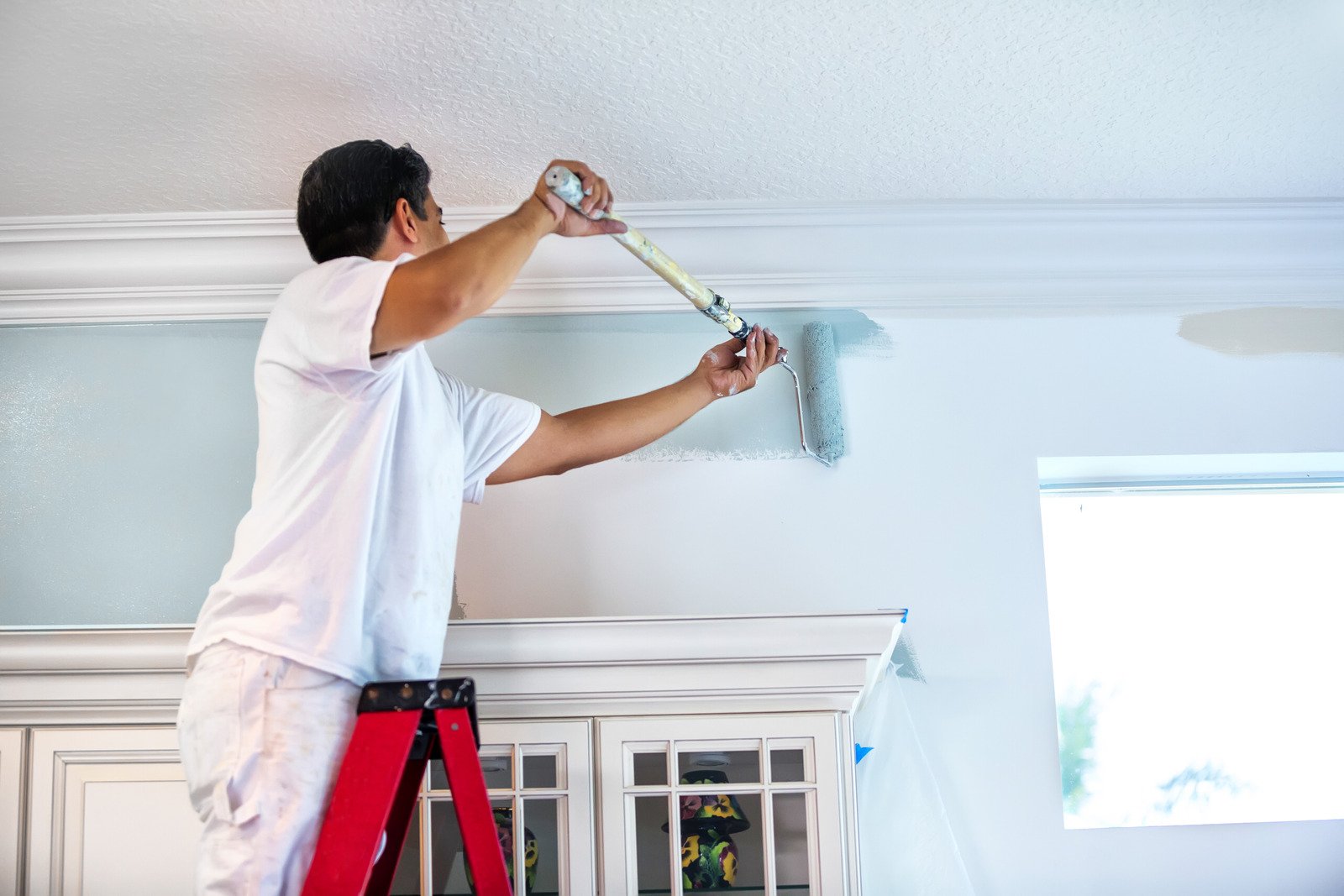Any interior home painter will tell you that painting inside is far more difficult than painting outside. When painting outside, you don’t have to worry about tricky angles, awkward spots, dim lighting, or a variety of other minor details. You can simply set up your ladders and begin working on the Siding or trim.
Painting interior walls takes a lot of patience and concentration! If you’ve never done it before and don’t know much about residential painting, it can be intimidating. However, with some planning and preparation, as well as helpful tips and advice from those who have gone before you, you will be able to complete a fantastic job in no time.
This article is for you if you want to know the ins and outs of painting inside your home. We’ll go over the steps interior painters take to make your next painting project as simple as possible, so you can get back to enjoying your freshly painted home.
Steps to Paint the Inside of a House
Decide on a Color and Why
Consider your home’s overall design and aesthetic, as well as the color’s functionality, when selecting a color for your interior house painting project. This will help you make an informed decision when choosing colors that will stand out and look beautiful.
If you’re painting a child’s room, for example, you might want to paint it a bright, fun color to match their personality and make them happy. If you’re painting a living room, consider using a more neutral color that will complement almost any type of furniture or accessory in the room.
If you feel you are still not as confident as you think you should be with your color, call to schedule an appointment with your local Sherwin Williams, PPG, Ben Moore etc to help select the color that is right for your home.
Invest in Painting Equipment
Once you’re set on a color, you need to consider what equipment you will need to do an excellent job painting your house.
While the tools needed will vary depending on your needs, keep in mind that you are not a professional painter and do not need to go overboard. However, you will need at least one paint roller, a paint tray, plenty of canvas drop cloths, and a paintbrush to do a fantastic job. You can find most, if not all, of these items at your local paint or hardware store at a reasonable price.
Prepare Your Walls
If you’re repainting a previously painted wall, you should clean it thoroughly before you begin. Remove any pictures or decorations from the wall and protect them with plastic drops to avoid paint splatter.
Fill all of your nail holes where pictures will not be going back on the wall. Let those dry and then proceed to sand the patched areas. if your walls are rough, you mayweed to pole sand the entire wall for aesthetics.
Next, wipe down the walls to remove dust that may be present from sanding the walls. If there are any stains, you can clean them with a product like TSP (trisodium phosphate). Finally, once the walls are clean and ready for a fresh coat of paint, allow them to dry completely before proceeding.
Do Any Repairs Before Painting
Even if you’re repainting your walls, you should make a few repairs before applying a new coat of paint.
First, inspect the wall for obvious dents or dings that can be repaired, as well as any holes. If you have a baseboard, make sure it’s straight and in good shape. You should remove any nails or screws that are loose or have come loose from the wall.
Lay Down Drop Cloths
During any interior painting project, it is common for paint to get on various items in the room. Furniture, windows, doors, pictures, and decorations may be included. To avoid this, use old sheets or tablecloths that you don’t mind getting paint on, or purchase drop cloths from a home improvement store.
Place drop cloths over furniture and against the room’s walls to prevent paint from splattering on surfaces you don’t want it to. If you have a large piece of furniture, such as a couch or a table, that will not fit under the drop cloths, use painter’s tape to mark off the area that will be painted.
Apply the Paint
It’s time to start painting now that you’ve prepped the surfaces and gathered your paint trays and brushes.
Check that you have the correct amount of paint in your bucket. If you have too much paint in your bucket, it will drip and splatter, and if you have too little paint, you will have to refill it frequently.
Finally, make sure you have your paintbrush ready. Dip the brush halfway into the paint and swirl it around to remove any bubbles.
You should apply two coats of paint. The first coat will serve as a foundation for the second coat, which should be applied a couple of hours after the first coat has dried.
After the Paint Has Dried
Allow the paint to dry completely after you’ve finished painting and before you begin cleaning up. Depending on the type of paint you use, this could take anywhere from 12 to 24 hours.
In the meantime, clean the brushes and rollers and store them in a dry, cool place for your future painting needs. You don’t want to leave them for too long, or they will dry out and become unusable.
Use your drop cloths to clean up any paint that may have spilled, and remove the covers from your furniture and doors.
You can now relax and enjoy your newly painted home.
Hire an Interior Home Painter from the Ohio Painting Company
Painting can be a fun and rewarding project, but it is a difficult job that can take several days to complete even for the most skilled house painters.
You can hire local painters from the Ohio Painting Company to do the painting for you if you don’t want to do it yourself or don’t have the time.
We provide professional painting services. Leave your home looking beautiful once the job is done, whether interior or exterior painting services are needed.
We have a painting crew of expert painting contractors who are familiar with the various tools and techniques required to paint your house quickly and efficiently while causing minimal disruption to your daily life.
Call the Ohio Painting Company at (937) 409-4443 and let us take the pain out of your painting project.






